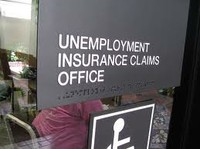Rutgers Forecast: New Jersey ‘Decisively’ Comes out of Recession but Still Trails Nation in Several Economic Indicators

Dovetailing the promising jobs growth, Mantell noted that the state’s average unemployment rate – 9.3 percent last year and currently 9 percent – will drop to 8.6 percent by year’s end. By the end of the 2022 forecast period, New Jersey’s average jobless rate will stand at 5.7 percent, still above pre-recession levels.
Additionally, while New Jerseyans experienced an average 4 percent rise in personal income in 2011 as the state left the recession, the figure will drop to 3.6 percent this year. Through the end of the forecast, the average gain will be 4.1 percent, somewhat lower than the 4.5 percent growth expected for the U.S. On a real per capita basis, income will grow nearly identically in New Jersey and the nation at about 1.5 percent annually.
Karl “Chip” Case, an emeritus professor of economics at Wellesley College and founding partner of the real estate research firm Fiserv Case Shiller Weiss Inc., joined Mantell on the program and looked at problems and prospects for the residential market. James W. Hughes, dean of Rutgers’ Edward J. Bloustein School of Planning and Public Policy, reviewed national economic trends. Lt. Gov. Kim Guadagno, who also serves as New Jersey's secretary of state, was to have described the outlook for the Christie administration's economic initiatives but was forced to cancel her appearance due to a family illness. Caren S. Franzini, chief executive officer of New Jersey's Economic Development Authority, gave the presentation instead.
Mantell’s forecast calls for nonagricultural employment in New Jersey to grow 1.2 percent by the end of 2012 and to average 0.8 percent – 32,000 jobs – through 2022. “We believe the pace of recovery and expansion in the state, as well as in the nation, in this business cycle will remain modest,” Mantell predicted. “There are still so many ongoing problems in the global and national economies. Rising oil prices, the federal budget deficit, very tight state and local budgets, and wavering consumer confidence all can hinder a robust turnaround.”
Mantell foresees growth in all sectors of the state economy, except manufacturing and information, during the course of the recovery. “After the middle of the decade, the employment base in manufacturing will essentially stabilize at about 236,000 jobs with the largest manufacturing employer continuing to be the chemicals industry,” Mantell said. “During the forecast period, the construction and service sectors will experience the most job growth.”
Between 2010 and 2022, output in New Jersey will expand at an average rate of 1.8 percent per year compared to the average rate of 2.5 percent expected nationwide. The differential is due to the relatively higher costs of living and doing business in New Jersey, as well as the state’s lower rate of population growth.
The state added 378,000 residents between 2000 and 2010, growing at an average annual rate of 0.44 percent. This was just over half as fast as population growth in the 1980s and was only half as fast as national population growth. Mantell predicted population growth here will average 0.6 percent a year from 2010 to 2022, compared to 1 percent annually nationwide. New Jersey will add more than 600,000 residents during that period. As a result, the Garden State’s population will top 9 million in 2015 and 9.4 million in 2022.
SUMMARY OF NEW JERSEY ECONOMIC FORECAST
| 2011 | 2012 | 2012-22 | |
| Annual Percentage Change | |||
| Nonagricultural Employment | 0.1% | 1.2% | 0.8% |
| Real Gross State Product | 3.2% | 1.4% | 1.8% |
| Personal Income | 4.0% | 3.6% | 4.1% |
| Population | 0.4% | 0.5% | 0.6% |
| Consumer Prices | 2.7% | 2.0% | 2.0% |
| Percentage | |||
| Unemployment Rate (average) | 9.3% | 8.6% | 6.1% |
Source: R/ECON
Media Contact: Steve Manas
732-932-7084, ext. 612
E-mail: smanas@ur.rutgers.edu